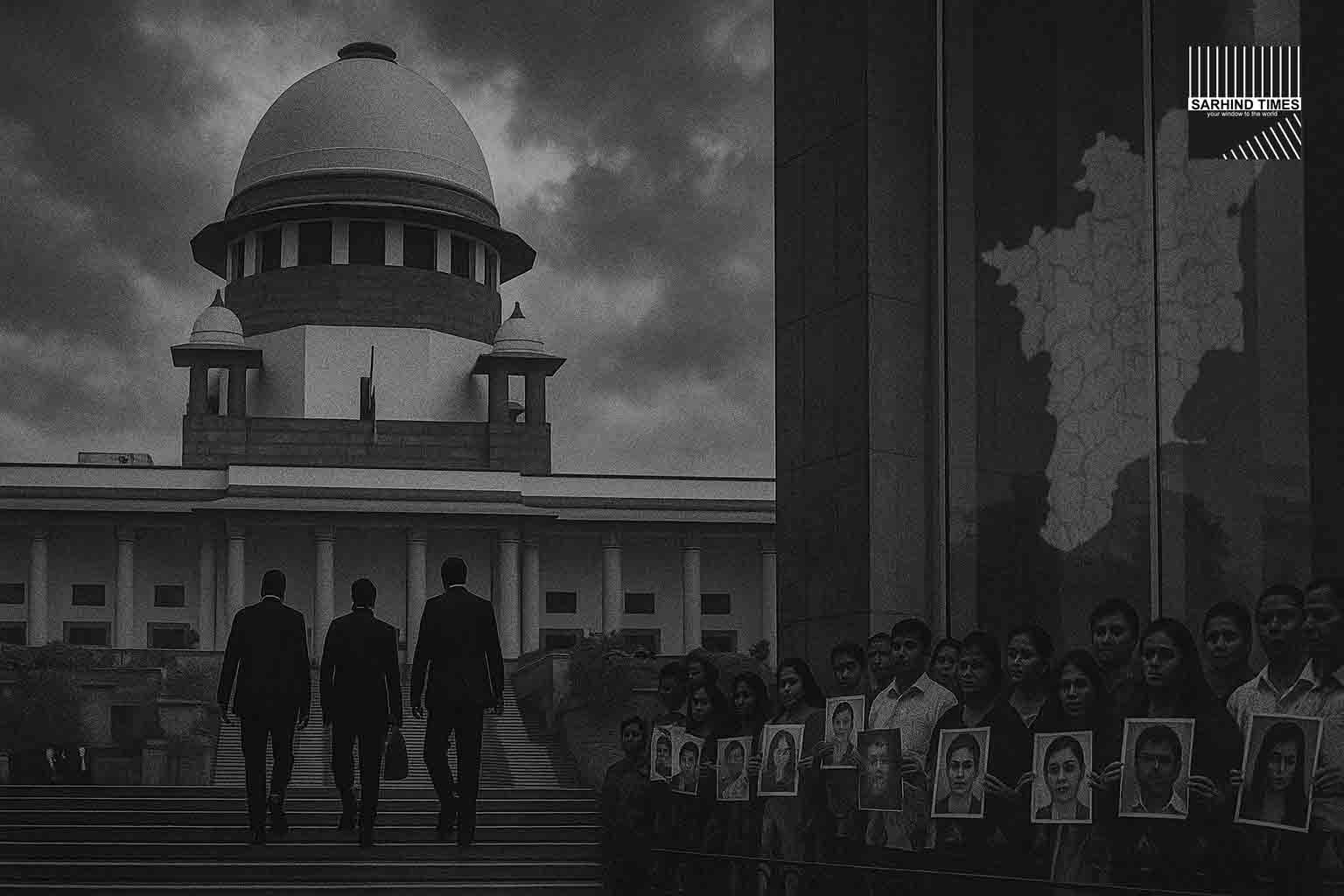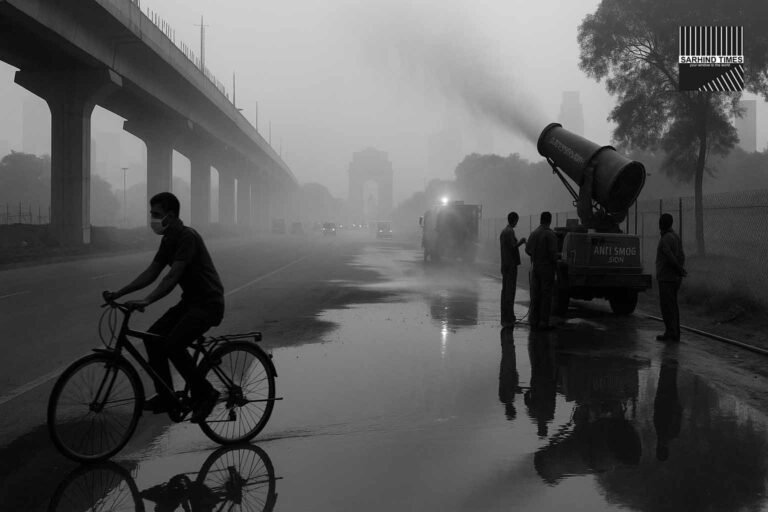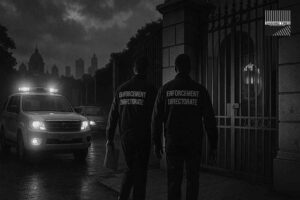The apex court’s ruling today on petitions demanding a CBI or independent investigation into the Karur rally stampede that killed 41 people could redefine accountability and event safety protocols in India’s public gatherings.
The Supreme Court is expected to pronounce its order today on multiple petitions—including one filed by actor-politician Vijay’s Tamilaga Vettri Kazhagam (TVK)—that seek a CBI-led or independent probe into the tragic Karur stampede of Tamil Nadu. The incident, which claimed 41 lives and injured over 70, has sparked nationwide debate on crowd safety, political responsibility, and administrative negligence. The judgment will likely address not just the scope of investigation but also compensation and systemic reforms in mass-event management. Source: India Today.
New Delhi, October 13 — Apex Court Steps Into a Case That Shook Tamil Nadu
The Supreme Court of India will deliver its much-anticipated verdict today on petitions seeking a Central Bureau of Investigation (CBI) or an independent Special Investigation Team (SIT) probe into the Karur stampede tragedy, one of the deadliest public event disasters in Tamil Nadu’s recent history.
The incident, which occurred during a political rally and aid distribution programme in Karur district last month, left 41 people dead—most of them women and senior citizens—and over 70 others injured.
The tragedy triggered a wave of public outrage, political blame-trading, and renewed scrutiny of how public events are managed in India’s densely populated towns during election cycles and festival seasons.
⚖️ The Case Before the Court
A bench led by Chief Justice D.Y. Chandrachud is scheduled to deliver the ruling, following extensive hearings over the last two weeks.
The petitions, filed by victims’ families, human rights organizations, and political entities including Vijay’s Tamilaga Vettri Kazhagam (TVK), allege gross negligence on the part of local authorities and inadequate supervision by event organizers.
The petitioners argue that the Madras High Court’s decision to constitute a State-level SIT is insufficient to ensure impartiality, given the involvement of senior local officials in authorizing the event. They have urged the Supreme Court to entrust the investigation to the CBI or form a court-monitored team comprising officers from outside Tamil Nadu.
“A tragedy of this magnitude demands independent scrutiny. The victims deserve truth, not tokenism,”
— Advocate P. Ramesh, appearing for one of the petitioner groups.
The State of Tamil Nadu, represented by the Advocate General, has opposed the CBI demand, maintaining that the SIT formed under Justice (Retd.) R. Krishnan is already functioning effectively, with interim findings expected soon.
📜 The Tragedy: What Happened in Karur
On September 6, 2025, a crowd of more than 10,000 people gathered at a private ground in Karur for a welfare event organized by the Vetri Vidiyal Foundation, reportedly affiliated with local political leaders. The event was intended to distribute financial aid and sarees to women beneficiaries.
Eyewitness accounts describe chaotic scenes when distribution began. Within minutes, the rush turned deadly as barricades collapsed and people fell over one another near a narrow exit gate.
Ambulances struggled to enter the venue due to parked vehicles, and emergency personnel arrived late. Most of the deceased were from nearby villages, drawn by promises of household goods and cash assistance.
Subsequent reports suggested inadequate crowd control measures, lack of police deployment, and absence of emergency exits, despite prior warnings issued by district officials.
“It was like a wave. Once it started, there was no way to stop it,”
— said Lakshmi Devi, who lost her sister and niece in the stampede.
🧾 The SIT Controversy
In the immediate aftermath, the Madras High Court directed the formation of a Special Investigation Team (SIT) headed by a retired district judge. However, petitioners later alleged that several key witnesses were intimidated and evidence tampered with.
This prompted the victims’ families to approach the Supreme Court, seeking transfer of the probe to the CBI or another neutral agency.
The apex court, during earlier hearings, expressed concern over:
- Delays in forensic examination of CCTV footage,
- Missing documents from the local collectorate,
- And the State’s conflict of interest in probing its own administrative machinery.
Chief Justice Chandrachud had observed:
“An investigation must inspire confidence. Justice cannot only be done—it must be seen to be done.”
🔍 What’s at Stake: Justice or Jurisdiction?
The verdict carries implications far beyond one case.
At its core lies a fundamental question: who investigates the State when the State itself may be complicit?
If the Supreme Court orders a CBI or independent probe, it would set a precedent for future cases involving public disasters under political patronage. Conversely, if the court endorses the existing SIT, it would reaffirm federal trust in State institutions.
Legal scholars say the judgment will likely balance federal autonomy with public accountability, perhaps by creating a hybrid structure—an SIT under judicial supervision with CBI technical support.
“This is not just about one stampede. It’s about ensuring no mother has to stand in a morgue again because safety took a back seat to politics,”
— said Advocate Meena Krishnan, appearing for a victims’ group.
🧠 The Legal Framework: Negligence Meets Accountability
Under Indian law, stampede-related deaths fall under Section 304A of the Indian Penal Code (causing death by negligence). However, such provisions often result in low-level accountability—typically targeting local officials or event managers.
Public safety experts argue that India needs a comprehensive legislation on mass-gathering management, encompassing:
- Mandatory safety audits,
- Crowd density controls,
- Compulsory insurance for event attendees,
- And a national disaster code for civic events.
Tamil Nadu itself has witnessed similar tragedies in the past—from the Sabarimala crowd crush in 2011 to the Chennai jallikattu mishaps. Yet, systemic reform remains elusive.
🧩 Public Reaction: Fear and Fatigue
In Karur and neighbouring districts, the anticipation surrounding today’s verdict is palpable. Families of victims gathered outside the collectorate have been holding silent vigils, demanding justice and higher compensation.
“No amount of money can bring back our daughters. But at least punish those who let this happen,”
— said Sundari, mother of a 19-year-old student who died at the site.
Civil society groups, including the People’s Forum for Accountability, have urged the Supreme Court to ensure rehabilitation for survivors and introduce binding safety guidelines for public events nationwide.
Meanwhile, political observers say the tragedy has dented the image of the ruling establishment, especially as Tamil Nadu prepares for local body elections next year.
📉 Political Repercussions
The Karur tragedy has become a flashpoint in Tamil Nadu’s volatile political landscape.
Opposition parties accused the government of administrative failure and demanded resignations of senior officials.
Actor-politician Vijay, who leads Tamilaga Vettri Kazhagam (TVK), has emerged as one of the strongest voices calling for accountability, positioning himself as a reformist alternative in state politics.
“Lives were lost because greed overtook governance. We cannot normalize negligence,”
— Vijay said in a statement after filing the petition.
The ruling DMK government, however, maintains that the tragedy was an accident, not a conspiracy, and that “politicizing the deaths” dishonours the victims.
⚙️ How the Verdict Could Shape Policy
Experts believe that the Supreme Court’s decision may extend beyond assigning an investigative agency. It could:
- Mandate National Event-Safety Protocols: Uniform safety audits for any gathering exceeding 1,000 people.
- Fix Administrative Accountability: Guidelines for district magistrates and police commissioners.
- Establish Compensation Benchmarks: For families of victims, tied to severity and income criteria.
- Call for Legislative Action: Direct Parliament or State Assemblies to enact crowd safety laws.
If such directives emerge, the ruling could join landmark judgments like the Uphaar Cinema Fire (1997) and the Hillsborough disaster inquiries abroad, redefining public safety jurisprudence in India.
📊 Data Corner: Stampedes in India (2010–2025)
| Year | Incident | Location | Deaths |
| 2011 | Sabarimala Festival | Kerala | 102 |
| 2013 | Ratangarh Temple | Madhya Pradesh | 115 |
| 2016 | Varanasi Bridge Collapse | UP | 24 |
| 2018 | Elphinstone Foot Overbridge | Mumbai | 23 |
| 2022 | Mata Vaishno Devi Shrine | J&K | 12 |
| 2025 | Karur Welfare Rally | Tamil Nadu | 41 |
Each incident has exposed regulatory gaps, poor crowd control, and absence of liability frameworks.
🕊️ Remembering the Victims
At the heart of this case lie stories of ordinary people—mothers, grandmothers, students—who attended what they thought was a community welfare event.
Post-mortem reports show that most victims died of asphyxiation and crush injuries, a pattern tragically consistent with poor emergency planning.
Several bodies remained unclaimed for over 48 hours, underscoring the chaos in post-disaster coordination.
Local NGOs have been counselling survivors suffering from post-traumatic stress, while social workers demand the creation of a national crowd-safety fund.
⚖️ The Verdict’s Broader Message
Legal experts say today’s ruling will reaffirm the judiciary’s role as the final guardian of accountability.
Whether the probe remains State-led or moves to the CBI, the Supreme Court is expected to:
- Ensure transparent investigation,
- Monitor rehabilitation of victims,
- And issue safety directives applicable across India.
The judgment could also shape future jurisprudence on “State liability” for negligence in public administration — a domain where Indian courts have gradually expanded constitutional remedies under Article 21 (Right to Life).
📢 Voices of Reform
“This tragedy must mark the beginning of a cultural shift in how India treats safety — not as an afterthought, but as a constitutional right.”
— Justice (Retd.) A.K. Ganguly, former Supreme Court judge.
“The Karur case will test whether justice in India can move from sympathy to systemic change.”
— Dr. Indira Narayanan, Policy Analyst.
“Crowd management is not rocket science. It’s discipline, training, and accountability.”
— S. Suresh, Disaster Management Expert, NIDM.
🔚 Conclusion: A Verdict Beyond Numbers
As the Supreme Court convenes to pronounce its verdict, the air in Karur is heavy with expectation and grief.
Whatever the outcome, the case stands as a reminder that public safety cannot be sacrificed at the altar of political spectacle.
The families who lost their loved ones are not waiting merely for a judgment — they are waiting for a message that human life matters more than votes.
If today’s verdict succeeds in delivering that message, it will not just be justice for Karur — it will be justice for every citizen who steps into a public space expecting safety and receives chaos instead.
#SupremeCourt #Karur #TamilNadu #CBI #Law #PublicSafety #Judiciary #SarhindTimes #Justice #Investigation























+ There are no comments
Add yours